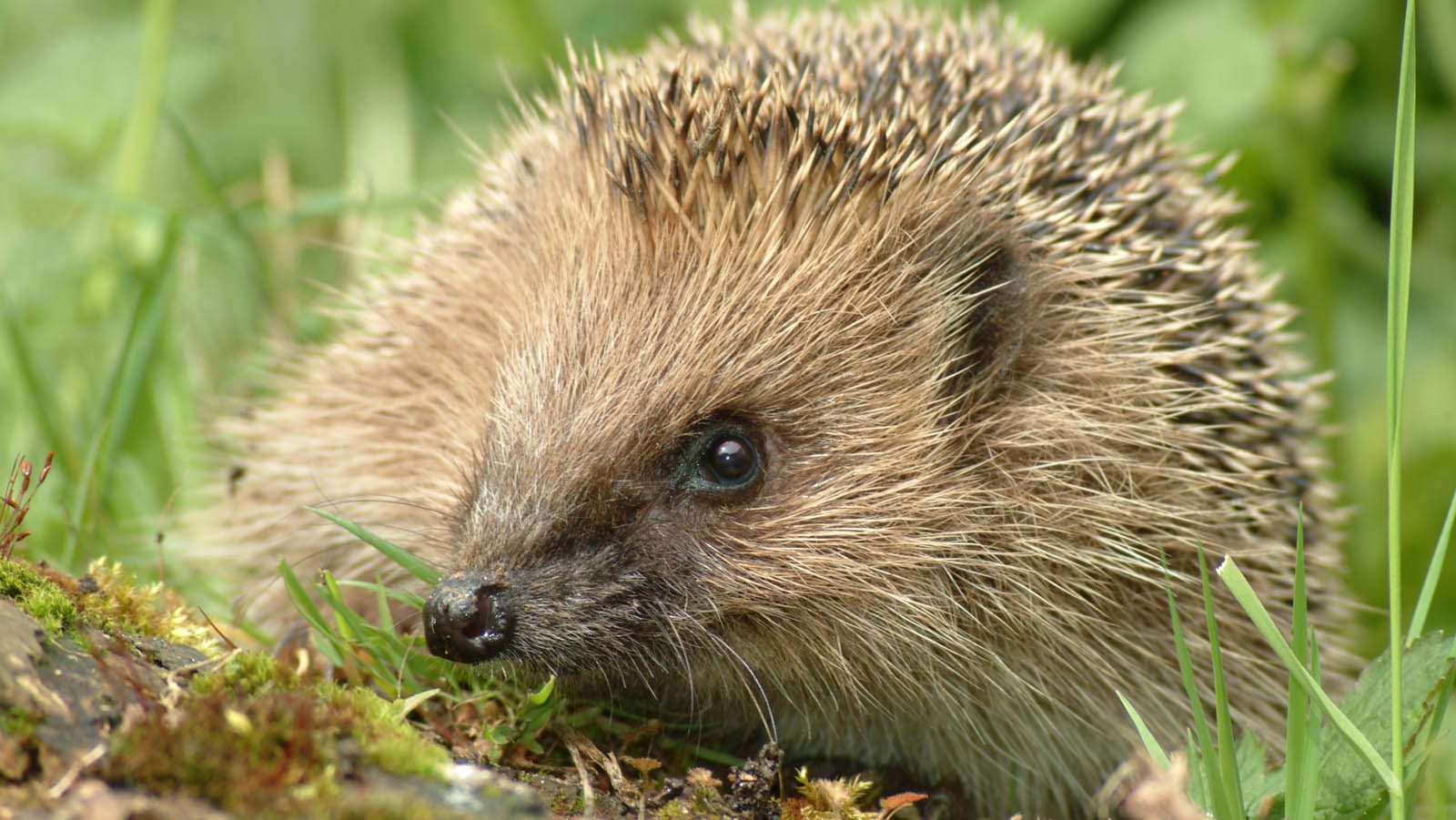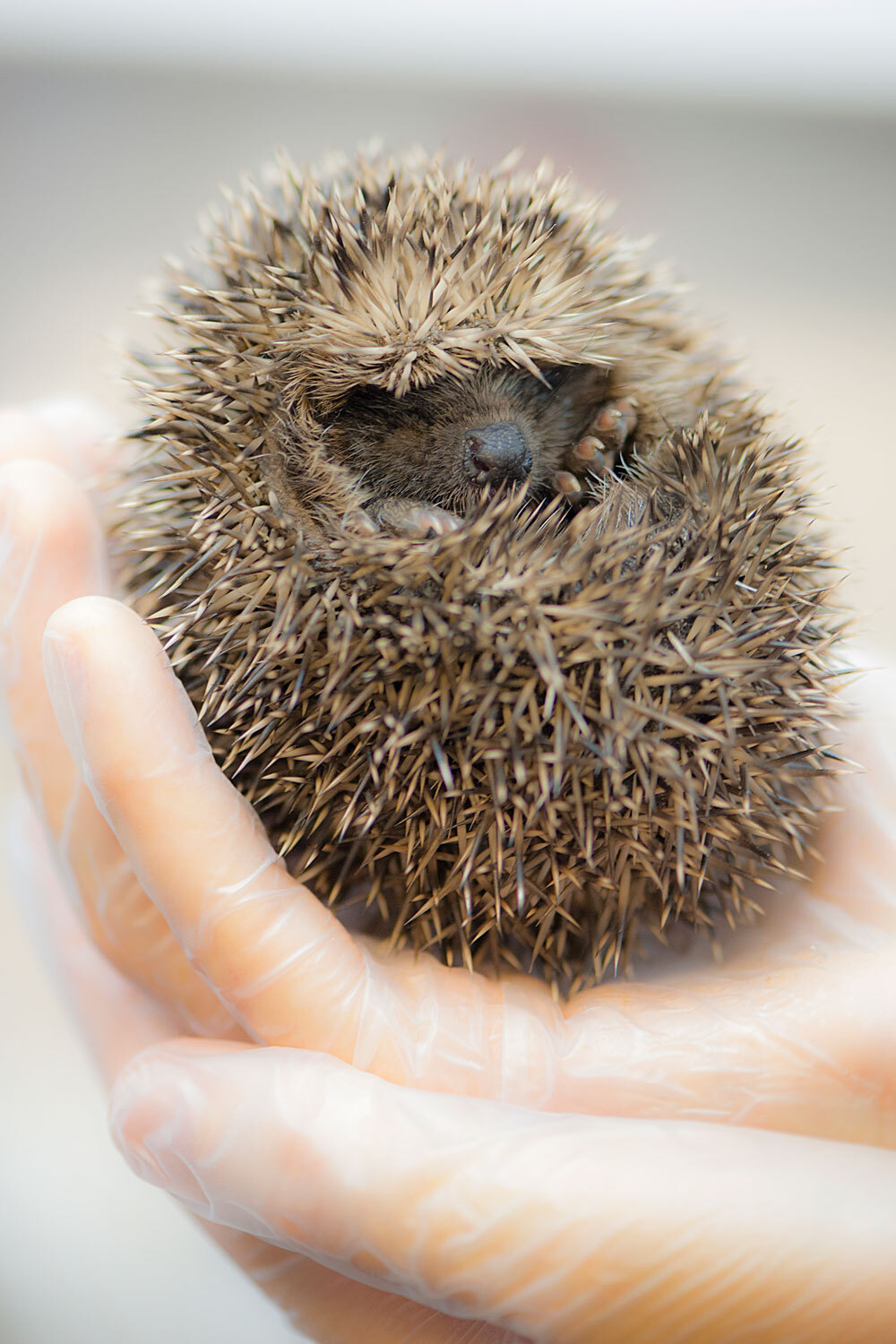
Hedgehog facts
These beautiful creatures have been a quintessential part of our British wildlife and our story books, all our lives. Britain's iconic prickly mammals have been a common sight across the length and breadth of the UK for many years, even finding their way into our gardens, to nest.
Length: 15-30cm
Tail: 1-2cm
Weight: up to 2kg
Diet: Invertebrates, as well as amphibians, birds' eggs they particularly like beetles and earthworms.
Average Lifespan: 2-3 years
When to see them: April to October.
Behaviour: Mostly nocturnal, you may see or hear one snuffling around the garden. They get their name from favouring hedges, and making pig like noises as they forage for bugs and grubs. Hedgehogs can travel up to 10km in a single night, and usually have multiple nest sites for safety.
UK population: est. 879,000
UK conservation status: Vulnerable to extinction
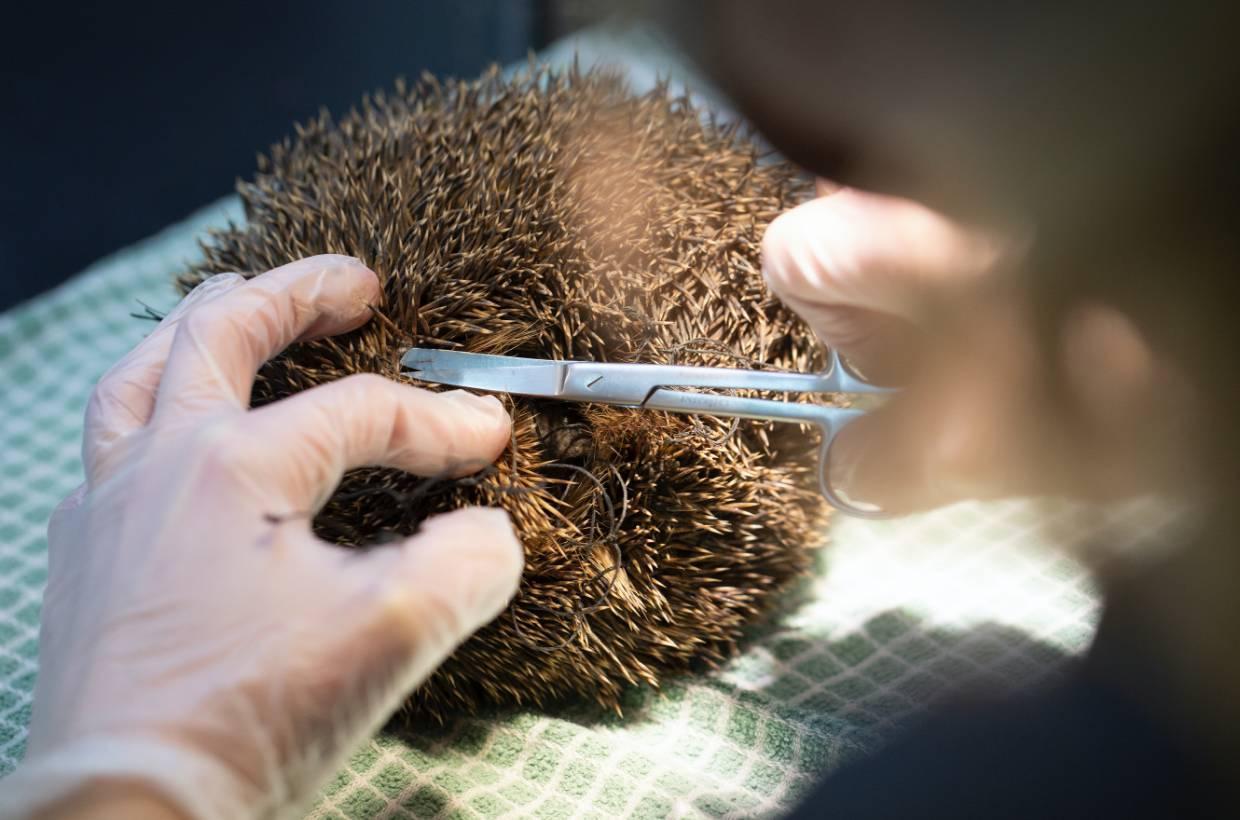
Their Decline
Sadly, these spikey mammals are in decline; threats, such as habitat loss, nest disturbances, the use of chemicals in gardens, and road traffic accidents, have resulted in the UK losing over 96% of its hedgehog population, since 1960.
There are a number of threats to the hedgehogs' habitat, and these include the change in farming techniques from pastoral to arable crop farming. The increased use of chemicals in domestic gardens can kill many of the hedgehogs' food sources, and a high percentage of hedgehogs are killed on the roads.
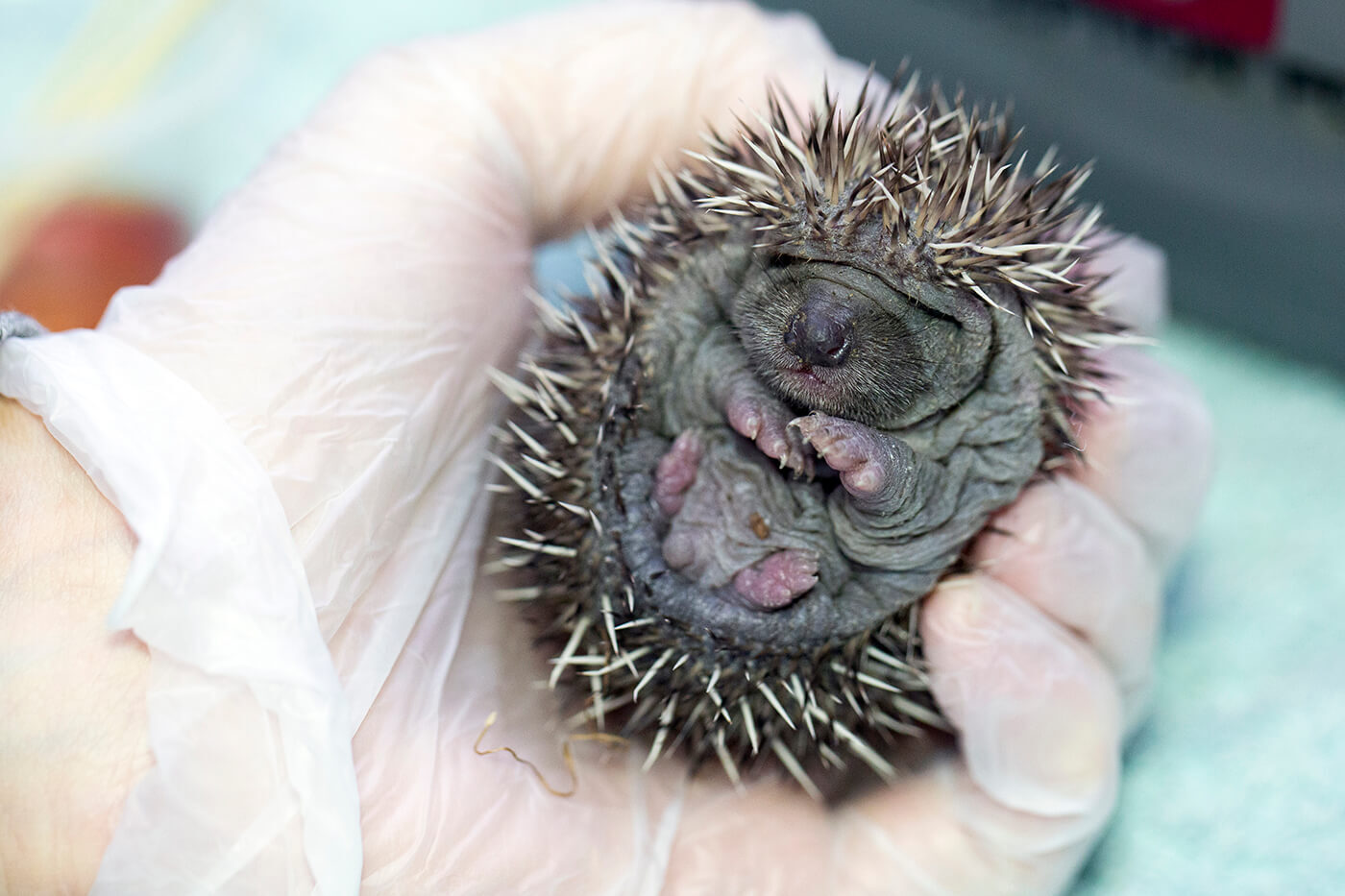
How you can help
There are a number of simple ways you can help Hedgehogs.
> Avoid using pesticides to encourage invertebrate abundance.
>Hedgehogs breed twice a year, once in spring and again in autumn, avoid any major garden works where possible, and keep pets away from possible nest sites.
> Slow down on roads, especially at night.
> Check under hedges and bushes before using garden tools to prevent serious injuries to hedgehogs.
> Keep a note for a local wildlife rescue in case you find an injured or orphaned hedgehog.
> Place a hedgehog size hole in your fence, or plant hedges to prevent fragmentation of hedgehog habitats.
Frequently Asked Hedgehog Questions
If you can see the hedgehog has obvious injuries, or is behaving strangely, i.e looking lethargic, or has efforted breathing, using a thick towel or garden gloves gently pick the hedgehog up and place it into a secure box. Call us on 01372 360404 for further advice.
It depends on the time of year. Whilst largely a hedgehog out during the day usually indicates something is wrong, nesting females may also come out in order to prepare for their impending little ones.
Taking a video or photo of how the hedgehog is behaving is always useful for wildlife rescues, as we can often assess the condition of the hedgehog as well as the behaviour.
If you have uncovered a nest and an adult hedgehog is present, simply re-cover the nest. Due to the disturbance the adult hedgehog may move on to another nest site, but they need to be given time to do this.
If you have uncovered the nest and there are hoglets present but no adult, monitor for if the hoglets are moving, but DO NOT touch them. If they are moving, re-cover the nest and monitor for mum returning to the nest to tend to them. Do this for no longer than a couple of hours. The hoglets will be dependent on their mum for warmth. If no mum returns, use gloves to place the hoglets into a warm box, and contact your closest wildlife rescue.
Hedgehogs are prone to lungworm and respiratory diseases. If you suspect this is the case, please, call us on 01372 360404. We may well advise you to pick the hog up, carefully, using stout gloves, and place it in a box, lined with towels or newspapers, to bring in to our hospital.
You are right – ‘bread and milk’ is not a good or healthy diet for a mammal that is carnivorous, and can be fatal to hedgehogs! The fact that your hedgehog laps up any bread and milk left out for it, doesn't mean it is a good thing to feed it, any more than sweets are good for us, no matter how much we like them! Cat food, cat biscuits or hedgehog biscuits and water is a far better way to keep the hedgehogs in your garden fit and healthy. Mealworms should also not be fed to hedgehogs, they are one of the main causes of metabolic bone disease in hogs.
Hedgehogs are nocturnal, and so feed during the night. You can leave cat or dog food out, along with a shallow saucer of water. Under no circumstances should they be fed bread, milk, peanuts or mealworms! Feeding should only be supplemental; this food is not a suitable long-term diet and they should forage to find suitable prey.
Please, cut the netting free around the hog, and then take the hog to your local wildlife rescue. They will be able to remove the rest of the netting and provide any necessary veterinary care.
I have found a small hedgehog in my garden, and the weather is getting cold. What should I do?
Once the weather starts getting colder, and the temperature regularly drops below 5°C at night, hedgehogs will start to obey the instinct to hibernate. To successfully survive hibernation, a hog must have sufficient body fat.
Often, youngsters born in late summer/early autumn will not have put on enough weight to survive hibernation, and may need to be ‘over-wintered’ at a wildlife centre.
Try to weigh the hog, if you can. Use kitchen scales and pick the hog up with oven/gardening gloves or in a towel.
If the hog is under 600g then it must get to a local wildlife centre. It is not advisable to “over-winter” them at your home, because they usually have parasitic burdens that require veterinary care.
If the hog is over 600g, then it should be fine, unless it is out in the daytime. Being out in the daytime is usually a sign that something is wrong, so, please, call us for advice. It may be that it is just gathering nesting materials, so we may need to ask you more questions.
If it is not out in the daytime and is over 600g, then there is no need to intervene. The hog will find the best place to hibernate and, provided your garden has suitable areas where it can do this, then it will be fine. Moving them while they are actually hibernating or about to hibernate is not a good idea, as their bodies become accustomed to the temperature in the spot they have chosen. Moving them would upset and stress them, so, as long as they are free to roam, they will sort this out for themselves.
Most British winters follow a similar pattern of alternating periods of cold and mild conditions, plus the occasional really cold spell. Consequently, hedgehogs follow a pattern of hibernation techniques that have not changed for centuries. Any time from November onwards (mainly after Christmas), fit mature hedgehogs will construct a hibernaculum (a hibernation nest), where they will, more or less, stay until March.
During the early stages of hibernation, or if the weather changes and become particularly mild, hedgehogs may still wake, occasionally, and come out of their nest to feed. As long they are over 600g, you can offer a bowl of good quality tinned meat (dog or cat food), along with fresh water (never milk!). During very cold spells, they may not come out at all, but if they are seen during milder spells, it is a good idea to offer some supplementary feeding to help them along.
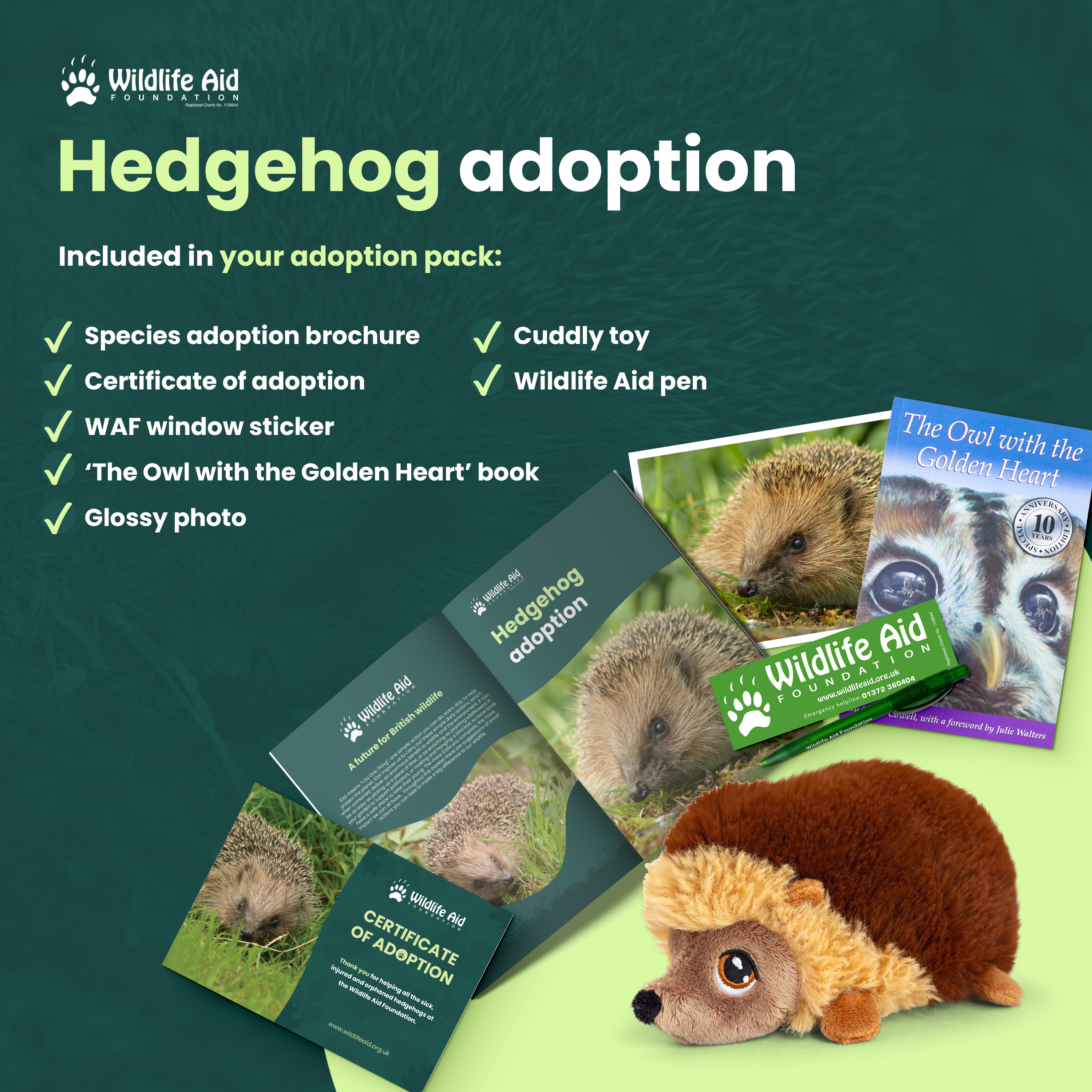
Adopt a hedgehog
By adopting a hedgehog with the Wildlife Aid Foundation, you will be providing vital funds to support the rescue and rehab of injured, sick and orphaned animals. For just £3 per month, your kind adoption will help provide the expert care, treatment and food they require before they are safely returned to the wild – where they belong.
And that's not all. As a hedgehog adopter, not only will you be providing invaluable care and helping countless animals, but you will also receive an exclusive hedgehog adoption pack, including cuddly toy, species brochure, certificate of adoption, photo, annual updates and more.
